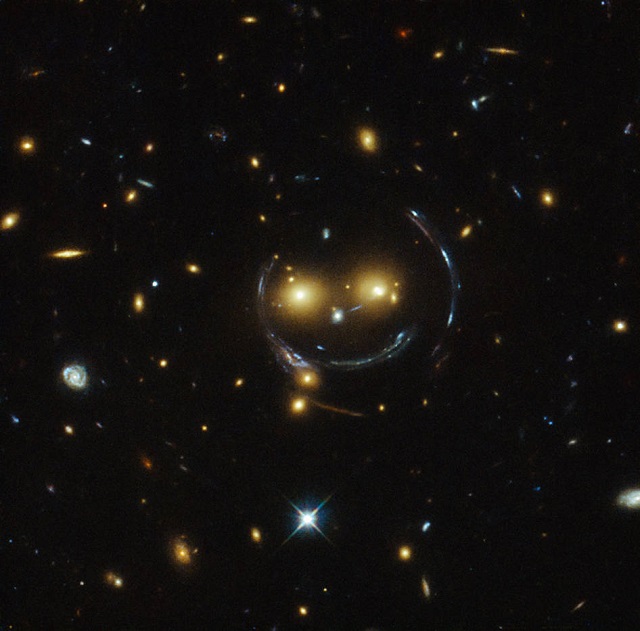
Image Credit: NASA/ESA – Caption: ESA
Quando sorridi all’Universo… l’Universo sorride a te!
Sembra una citazione zen, fermo restando che credo fermamente sia proprio così per più di una ragione, in questo caso ci troviamo di fronte ad una immagine dell’ammasso di galassie denominato SDSS J1038+4849, presa dal Telescopio spaziale Hubble in cui al centro pare proprio esserci il classico smile, ovvero quella faccina sorridente che tutti conosciamo. Si tratta di una foto reale che ritrae due brillantissime galassie color arancio che sembrano gli occhi, mentre il sorriso è formato da un arco prodotto dall’effetto conosciuto come lente gravitazionale, che in fisica, in particolare nella teoria della relatività generale, è un fenomeno caratterizzato dalla deflessione della radiazione emessa da una sorgente luminosa a causa della presenza di una massa posta tra la sorgente e l’osservatore. L’anello di Einstein è appunto la deformazione della luce proveniente da una sorgente (come una galassia o una stella) in un anello attraverso l’effetto lente gravitazionale sulla luce della sorgente dovuta ad un oggetto con una massa estremamente grande (come un’altra galassia o un buco nero). Questo si verifica quando la sorgente, la lente e l’osservatore sono allineati. ☺
When you smile at the universe… the universe smiles back!
In the centre of this image, taken with the NASA/ESA Hubble Space Telescope, is the galaxy cluster SDSS J1038+4849 — and it seems to be smiling. You can make out its two orange eyes and white button nose. In the case of this “happy face”, the two eyes are very bright galaxies and the misleading smile lines are actually arcs caused by an effect known as strong gravitational lensing. Galaxy clusters are the most massive structures in the Universe and exert such a powerful gravitational pull that they warp the spacetime around them and act as cosmic lenses which can magnify, distort and bend the light behind them. This phenomenon, crucial to many of Hubble’s discoveries, can be explained by Einstein’s theory of general relativity. In this special case of gravitational lensing, a ring — known as an Einstein Ring — is produced from this bending of light, a consequence of the exact and symmetrical alignment of the source, lens and observer and resulting in the ring-like structure we see here.
Source/Continue reading → NASA.gov





















